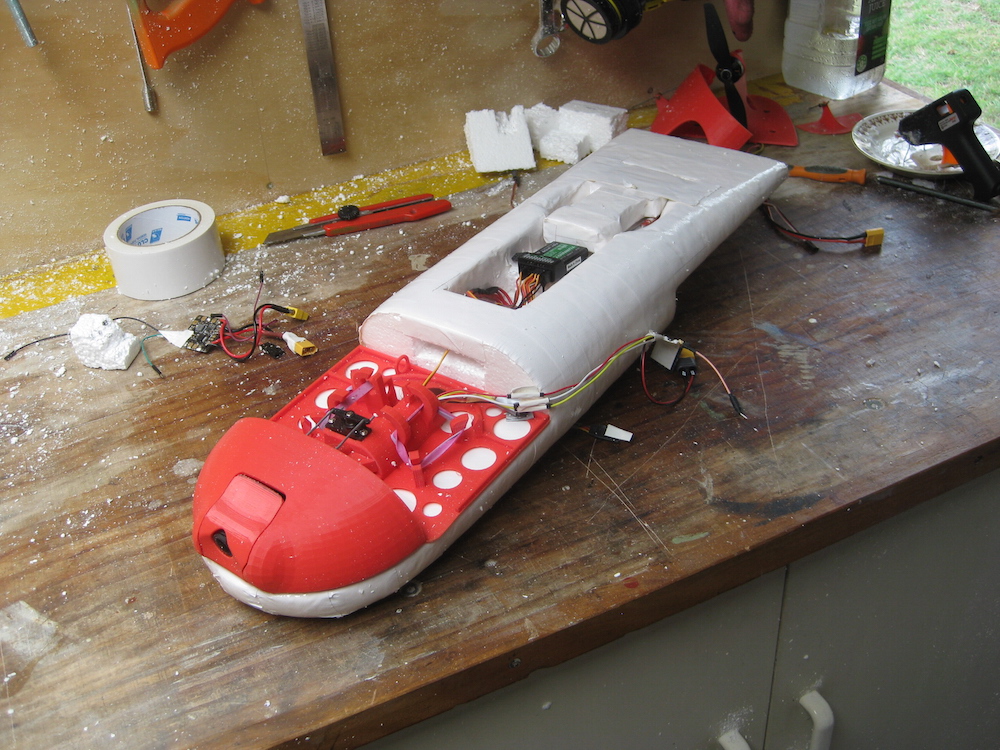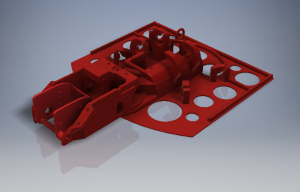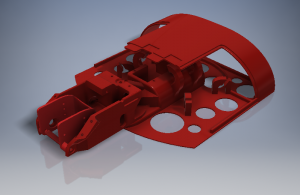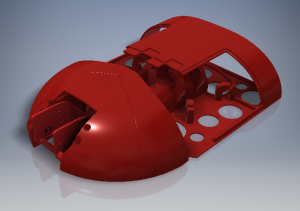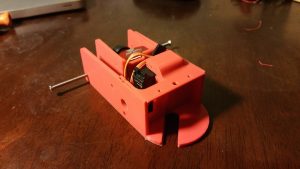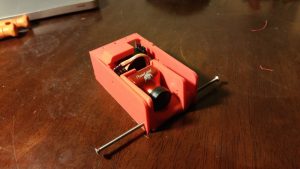Gimbal available here
Motor mounts
Servo mount control horn kits
Servo mount control horn kit download
Category: Temarai
Simple airframe build – part II
Simple airframe build – Part I
Simple air frame
The flying rectangle.
A video to show that even the simplest of air frames will carry the Temarai gimbal.
This wing is made from 50mm thick EPS foam rectangles stuck together with duct tape (cloth tape) and hot melt glue. Only the leading edges have been rounded using sandpaper.
The 2 things you need for a balanced flight are:
- Adding or removing nose ballast to approximately fly flat and
- Setting the AOA (Angle of Attack) using the control surfaces (usually 6-7 degrees).
All the red plastic parts you see on this plane are available on this site. The motor mounts aren’t up yet, but will be soon.
The control surfaces are 5mm foam board available from sign writing supply shops.
Temarai Behm – Test Flights
About Temarai
Head Tracker progression
Gimbal on the way
2 axis inline (possibly) aerodynamic head tracker gimbal
Currently working on making this 2 axis head tracker gimbal. Roll is not necessary. It it optimised for FPV slope soaring (gliding). We want it to ultimately sit under an aerodynamic cowl so most of the bumpy edges are not in the air stream. Also both rotation points have their own bolts so that load on landings are not transferred through the servo mechanics as much. This design is for the Runcam Eagle Pro 2.
It’s designed for standard Corona 939MG servos, simple linkage stoppers and galvanised 1.8mm – 2mm fencing wire for pushrods.

